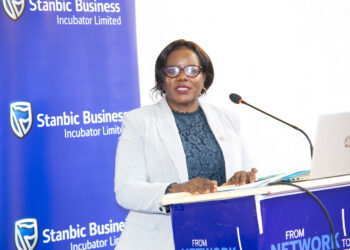By Andrew Hoyle
I’ve finally been able to spend some real time with the foldable Huawei Mate X, the Chinese company’s folding phone rival to Samsung’s Galaxy Fold and Motorola’s folding Razr. After a whole day using it all over Paris, I’ve gotta be honest, this foldable Android device is damn cool.
I’ll start with the obvious, the actual folding mechanism. The Mate X’s flexible OLED screen folds backwards on itself, in contrast to Samsung’s Galaxy Fold, which closes in on itself like a book, or the Razr, which folds shut like an old clamshell phone. That means you can use the entire 8-inch display even when the phone is closed. Unlike the Galaxy Fold, there is no internal Mate X display.
Now we can debate all we want about which screen design and mechanical hinge are best, but this is purely about the Mate X, so I’ll tell you what I’ve found to be great so far.
First of all, that folding display just looks amazing. The way the screen bends back around on itself, without any kind of distortion to the images, is awesome and I love the way the interface — no matter what you’re looking at — instantly resizes into the correct aspect ratio. When I first saw this at MWC earlier in the year I had a genuine rush of excitement at witnessing something so futuristic. Months later, and even having used the Galaxy Fold since its launch, I’m no less excited about the way the Huawei Mate X bends.
Trust me when I say that from the moment you get it out of the box, you’ll want to fold and unfold the Mate X time and time again. Your friends will want to have a go, your colleagues will want a go and even random strangers in bars will want a go.
But there’s more to like about this foldable phone than just its ability to draw attention on a night out. By folding backwards as it does, that big screen is essentially split in half, giving you a 6.6-inch display in its regular, “closed” phone format, outsizing all but the biggest phablet giants. (You get full use of the screen only when you unfold the phone.) As a result, videos and photos look great, particularly because there’s no notch interrupting the view — something I’ll come back to later.
Having a big outer screen in “phone mode” makes it much more usable than the closed Galaxy Fold. In my several months with the Fold, I’ve found its 4.6-inch outer screen to be so narrow that typing on it can be extremely difficult. As a result, I almost always use it in its large, folded-out tablet mode. I’ve been forced to ask myself, do I really have a foldable smartphone or do I have a tablet that can be folded away for easy storage?
With the Huawei Mate X, I don’t need to ask myself the same question. The Mate X’s design is comfortable to use and while it’s wider than the Fold, it’s much thinner in its closed form, so it sits in my jeans pocket more easily and didn’t feel at all awkward to keep there as I paced the busy Parisian streets.
The downside? By bending outwards, the rear screen is permanently exposed to the world, or to potentially damaging keys and coins in your pocket. Although the plastic material seemed pretty tough in my time with it, I can’t vouch for it over months or years of ownership and I can’t deny I’d be concerned about how easily it could get damaged. Let’s not forget that Samsung cancelled all orders of the original Fold following numerous instances of the screen breaking and eventually launched it with a refreshed design. At the very least, I’d want to keep it in some kind of protective sleeve when not in use.
The OLED display itself is bright, vibrant, pin-sharp and even under the bright lights of my hotel room — and later, under the admittedly gray sky of winter in Paris — I didn’t struggle to read what was on screen. Watching videos in phone mode is great, but it’s when you fold it out into its full 8 inches that those videos become significantly more immersive. I really loved checking out the images I shot on my day out in the city on that big display.
To allow it to bend, the display is covered in plastic, not glass (as are all of today’s foldable phones) and, like we’ve seen on the Galaxy Fold, there are some noticeable ripples on the screen’s surface when it lays flat. But they’re best described as “ripples” rather than the more pronounced “crease” on the Fold. This is likely due to the fact that the screen doesn’t bend at such a sharp angle, thereby causing less of a crease in the display material. In my extended hands-on throughout the day, I rarely noticed these ripples and never found them to be a distraction.
If I were really nitpicking (which, of course, I am), I’d say that the folding hinge is a bit stiff. Bending it backwards from its tablet mode feels like you’re having to force it more than it really wants, and on my first few attempts I wasn’t sure if I was doing it properly. But it’s something I’m sure you’d get used to once you got over the initial jarring sensation of basically trying to bend a tablet in half. It does mean that you’re not likely to accidentally close it while using it as a tablet. I do like that a physical clasp holds it securely in its phone form and there’s an easy-to-reach button that you’ll press to release it and fold back out. The Fold and Razr use magnets to remain shut, but I believe the Mate just relies on the clasp. Time will tell which is better.
The cameras are housed in a vertical side-bar, which I found to be a handy gripping point when unfolded in tablet mode (when closed, the phone folds back, sitting flush against this sidebar). It also means the cameras don’t interrupt the display with notches, not even for selfies, as you simply turn the phone over and take those with the main camera.
The camera lineup is much the same as Huawei’s P30 Pro: a standard lens, a zoom lens that offers 3x and 5x zoom, a super wide-angle lens and a fourth “time of flight” sensor for depth processing. Having used the cameras extensively throughout my time with the smartphone, I’m pretty pleased with the results, particularly the portrait mode, which gave an extremely accurate bokeh around my willing subject. Exposure seemed good across the board and it uses the same night mode that’s impressed me so much on Huawei’s previous flagship phones, being able to capture bright, sharp images in dark night-time scenes.
Do you have a story in your community or an opinion to share with us: Email us at editorial@watchdoguganda.com











